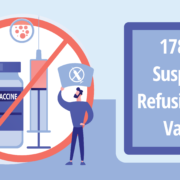Hiring Picks Up in the USA
The number of unemployment-benefit recipients is falling at a faster rate in Missouri and 21 other states are canceling enhanced and extended payments this month. This suggests that ending the aid could push more people to take jobs, according to the Wall Street Journal.
Federal pandemic aid bills boosted unemployment payments by $300 a person each week, and extended those payments for as long as 18 months; well longer than the typical 26 weeks or less.
The extended benefits are set to expire in early September, but states can opt out before then.
- Organizations need to gear up their hiring between now and October to take advantage of the influx of new potential applicants.
Missouri Gov. Mike Parson said the benefits were helpful during the height of the pandemic, but their continuation has “worsened the workforce issues we are facing.”
The 21 states that have ended, or will end the beefed-up payments in June, saw a 13.8% drop since mid-May in the number of people receiving unemployment benefits. The four states planning to end the benefits in July and September saw 10% and 5.7% drops, respectively, the Journal said, citing an analysis by Jefferies LLC.
The additional payments may have contributed to a labor shortage, those in favor of cutting the benefits have said, while others argue other economic and pandemic-related issues are keeping people out of work, according to the WSJ. Both are probably true.
Workers may still receive unemployment benefits on their states’ programs when the additional payments end in September.
Several states are offering payouts to workers who accept jobs and complete an allotted number of weeks as an employee as part of an effort to whittle down the reliance on the federal program.




